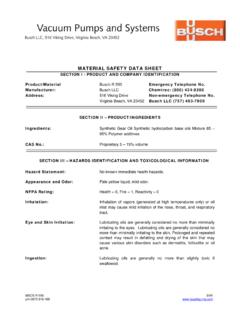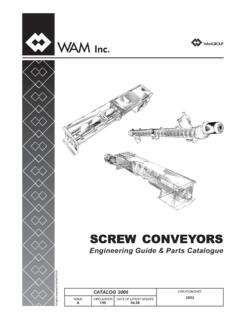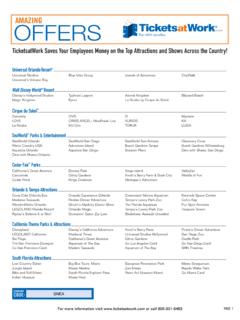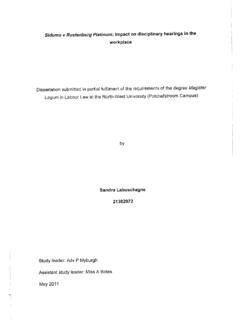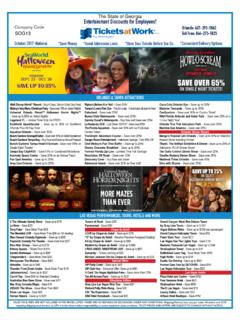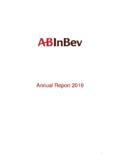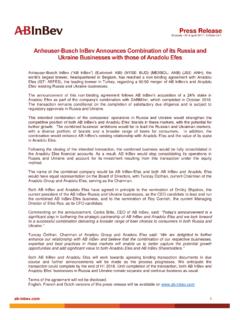Transcription of MATERIAL SAFETY DATA SHEET - M.C.Schroeder
1 MATERIAL SAFETY data SHEET Product/ MATERIAL : Busch R-590 Oil MATERIAL SAFETY data SHEET Product/ MATERIAL : Busch R-590 Oil Emergency Telephone No. Manufacturer: Busch, Inc. Chemtrec: (800) 424-9300 Address: 516 Viking Drive Non-emergency Telephone No. Virginia Beach, VA 23452 Busch, Inc. (757) 463-7800 SECTION I - PRODUCT IDENTIFICATION Trade Name and Synonyms: R-590 Oil Chemical Family: Hydrocracked, Technical Grade Mineral Oil DOT Hazard Class: None Warning Statement: None per OSHA 29 CFR 1910 SECTION II - OCCUPATIONAL CONTROL PROCEDURES Eye Protection: SAFETY glasses. Chemical-type goggles or face shield as required by individual company. Skin Protection: Exposed employees should exercise reasonable personal cleanliness. This includes cleansing exposed skin areas several times daily with soap and water, and laundering or dry cleaning soiled work clothing at least weekly.
2 Inhalation: None required if exposures are within permissible concentra-tions; see below. Ventilation: Normal Permissible Concentrations (Air): 5 mg/m3 of air for mineral oil mist averaged over an 8-hour daily exposure (ACGIH 1984-85). SECTION III - EMERGENCY AND FIRST AID PROCEDURES Eye Contact: As with most foreign materials, should eye contact occur, flush eyes with plenty of water. Skin Contact: None considered necessary. Nontoxic by skin absorption. Ingestion: Call a physician. Inhalation: None considered necessary. MSDS R-590 Page 1 of 4 Rev. 1/2/02 SECTION IV - PHYSIOLOGICAL EFFECTS Effects of Exposure: Eyes: Believed to be minimally irritating. Skin: Believed to be minimally irritating. Respiratory System: Believed to be minimally irritating if not in excess of permissible concentrations; see page 1.
3 Chronic: N/D Sensitization Properties: Skin: Yes ____ No ____ Unknown X Respiratory: Yes ____ No ____ Unknown X Median Lethal Dose (LD50 LC50) (Species): Oral: N/D Inhalation: N/D Dermal: N/D Other: N/D Irritation Index, Estimation of Irritation (Species): Skin: N/D Eyes: N/D Symptoms of Exposure: None expected other than possible minimal irritation. SECTION V - FIRE PROTECTION INFORMATION Auto-ignition Temperature: N/D Flash Point (Method): 485 F (COC) ASTM D92 Flammable Limits (%): Lower: N/D Upper: N/D National Fire Protection Association: Health: 1 Reactivity: 0 Flammability: 0 Special: B Special Fire Fighting Techniques: When this fluid is burning, it may evolve irritating/noxious fumes. Fire fighters wear NIOSH/MNSA approved, self-contained breathing equipment.
4 MSDS R-590 Page 2 of 4 Rev. 1/2/02 SECTION V - FIRE PROTECTION INFORMATION (Cont.) Recommended Fire Extinguishing Agents and Special Procedures: According to the National Fire Protection Association Guide, use water spray, dry chemical, foam, or carbon dioxide. Water or foam may cause frothing. Use water to cool fire-exposed containers. If a leak or spill has not ignited, use water spray to disperse the vapors and to provide protection for persons attempting to stop the leak. Unusual or Explosive Hazards: None SECTION VI - ENVIRONMENTAL PROTECTION Waste Disposal Method: Under RCRA, it is the responsibility of the user of products to determine, at the time of disposal, whether product meets RCRA criteria for hazardous waste. This is because product uses, transformations, mixture, processes, etc.
5 , may render the resulting MATERIAL hazardous (see Remarks for Waste Classification). Procedures in Case of Breakage or Leakage: Contain spill if possible. Wipe up or absorb on suitable MATERIAL and shovel up. SECTION VII - PRECAUTIONS None considered necessary. Requirements for Transportation, Handling, and Storage: Minimum feasible handling temperatures should be maintained. Periods of exposure to high temperatures should be minimized. Water contamination should be avoided. DOT Proper Shipping Name: N/A DOT Hazard Class: N/A Regulatory Information: SARA Title III, Section 302/304, Extremely Hazardous Substance Component CAS No. Percent RQ (lbs.) TPO (lbs.) None MSDS R-590 Page 3 of 4 Rev.
6 1/2/02 SECTION VIII - CHEMICAL AND PHYSICAL PROPERTIES Boiling Point ( F): N/D Vapor Pressure (mm Hg): N/D Specific Gravity (H2O = 1) .864 Vapor Density (Air = 1): N/D pH of Undiluted Product: N/A Solubility: N/D % Volatile by Volume: N/D Evaporation: N/D Viscosity: 108 cST @ 40 C Appearance and Odor: Light amber, little odor Hazardous Polymerizations: Do not occur MATERIAL Reacts Violently With: Air ____ Water ____ Heat ____ Strong Oxidizers ____ Others ____ None of These X SECTION IX - COMPOSITION CAS No.: 72623-87-1, 72623-85-9, 72623-83-7 Chemical/Common Name: Solvent refined, technical grade mineral oil OSHA Class: 29 CFR 1910 Exposure Limit: mg/m3 TWA Mineral oil mist has a permissible exposure level (PEL); therefore, this product by that definition could be considered hazardous under OSHA ( ). No special warning labels are required.
7 HMIS: Health: 1 Reactivity: 0 Flammability: 0 Caution: Misuse of empty containers can be hazardous. Empty containers if used to store toxic, flammable, or reactive materials. Cutting or welding of empty containers might cause fire, explosion, or toxic fumes from residues. Do not pressurize or expose to open flame or heat. Keep container closed and drum bungs in place. Notice: The data and recommendations presented herein are based upon data that is considered to be accurate. However, Busch makes no guarantee or warranty, either expressed or implied, of the accuracy or completeness of this data and recommendations. N/D - Not Determined N/A - Not Applicable < - Less Than > - Greater Than MSDS R-590 Page 4 of 4 Rev. 1/2/02

